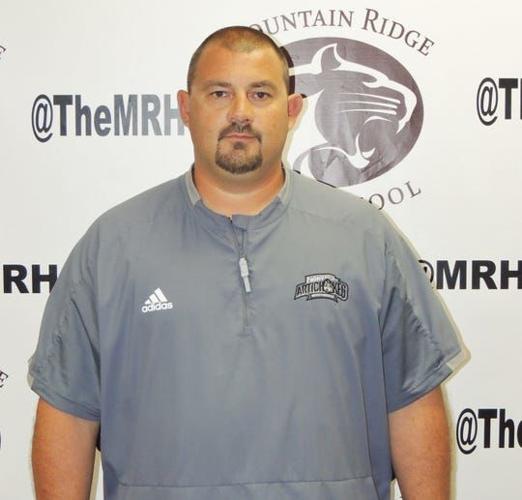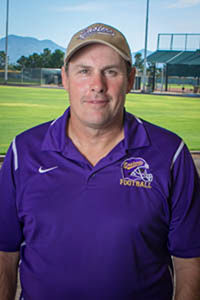Doug Madoski is a product of a community college.
Madoski was one core class short of being an NCAA qualifier when he graduated from high school in Manteca, California, which is about 75 miles east of San Francisco. The defensive lineman instead enrolled and played for San Joaquin Delta College, a two-year program in nearby Stockton.
Madoski parlayed that opportunity into a scholarship at Utah State. He eventually became a coach, taking over the program at Scottsdale Community College in 2005.
Madoski served in that capacity until May of this year. By that point, the bad news was in his rear-view mirror: SCC and the other six junior colleges in Arizona that played football had dropped the sport, mainly for financial reasons. Madoski’s Artichokes played their final game Dec. 1.
Madoski’s emotions ranged from shock to concern — for his players and the other schools’ displaced players — to frustration. Once he got past that, he focused on what might come next. He was far from alone in thinking that junior college football in Arizona was worth saving, in some form.
“We’re driving kids to get an education, so they can be more successful in life,” said Madoski, who has a pair of bachelor’s degrees. “We felt a need for that in this marketplace. We had some initial conversations, some initial dialogue. Then the seed of an idea. Now it’s starting to grow.”
Madoski and one of his assistants at SCC, Steven Weiss, formed the Hohokam Junior College Athletic Conference in January. The HJCAC is a nonprofit league consisting of five private, corporate-funded football programs that are slated to begin play Aug 24. Four are located in Maricopa County; the fifth is in Tucson.
Participating players are required to enroll in local community colleges to work toward an Associate of Arts degree. Although they aren’t technically playing for those schools, the goal remains the same: to send as many student-athletes to four-year universities as possible.
“The biggest thing we wanted to do was make it a nonprofit and utilize the platform we had to generate interest (in higher education) and take care of kids,” Madoski said. “This isn’t anything outside of giving back to the community.”
Madoski and Weiss are confident they can transform the HJCAC from a startup to a respected, legitimate league that’s eventually affiliated with the National Junior College Athletic Association. They also understand that their quest is fraught with challenges.
“It is still a fluid process, a growing process,” Madoski said. “Every day we’re working things out. That will never change.
“(But) we know we’re on the right track. The response has been exciting.”
Making the grade
Launching and sustaining a football league, even on a relatively small scale, is no easy task. The last thing the people behind the HJCAC want to do is go the way of the Alliance of American Football, the spring pro league that lasted less than one season.
The lengthy to-do list for Madoski, Weiss and their fellow coaches included recruiting entirely new rosters of players; finding facilities in which to practice and play; obtaining equipment; hiring assistants and officials; formulating a schedule; and, last but not least, finding a way to pay for it all.
Much of that work is done, Madoski said. His team, the Maricopa Mustangs, will use the facilities at Glendale Mountain Ridge High School — where Madoski is also the head coach. (The Mustangs will practice there in the morning, the Miners in the afternoon.)
Tucson’s team, the Sonoran Sidewinders, will be led by longtime Eastern Arizona College coach John O’Mera. The team is working on a deal to practice and play at the Kino Sports Complex.
“Their efforts are strong. Their efforts are passionate,” NJCAA president and CEO Christopher Parker said of the HJCAC. “How they get to the finish line is going to be a challenge.”
Parker participated in a conference call this past week with the HJCAC’s leaders to discuss the league’s structure and expectations. The new league also made the agenda for the NJCAA’s board meeting the following day.
The most important element, Parker said, is “to make sure their academic piece is solid.”
It won’t be as streamlined a process as before, when the student-athletes played for the schools they attended. But Madoski insists that academics will be of the utmost significance.
“There will be mandatory grade checks. There will be mandatory study halls,” Madoski said. “If a student-athletes is failing a class, they won’t have an opportunity to participate in a game. That’s a conference rule for us. If you don’t take care of business, you’re not going to play.”
HJCAC players can take classes on campus or online. The coaches won’t have the same level of access to their players’ records, and that worries O’Mera to a degree. He plans to emphasize the importance of schoolwork “every day” and has some ideas on how to check up on his players. They include having them text pictures from their classrooms.
“We have no magic wand,” O’Mera said. “But there are ways to make sure guys are doing what they’re supposed to do. Game time is always the motivation.”
‘Labor of love’
Insufficient funding for an expensive sport ultimately led to football’s demise at Arizona’s junior colleges. Making sure the HJCAC is financially viable has been a priority since the league was formed.
The HJCAC is being funded through private donors, sponsorships and strategic partners, Madoski said. He declined to reveal who the league’s corporate partners are.
“I don’t have the total ins and outs,” O’Mera said, “but we’ve got two great people running it (Madoski and Weiss), and they’re very confident that we’re funded and going to be for a long time.
“I believe in those guys. I’ve competed against them. They’ve spent hours and hours and hours trying to make this thing happen.”
O’Mera signed up to coach the Tucson team despite knowing he wouldn’t start getting paid until September. A January news release announcing the launch of the HJCAC said the salaries of the league’s head coaches would start at $40,000.
“Nobody … is doing this to get rich,” Madoski said. “This is a labor of love in a lot of ways – not just for the sport and the game but for these kids.”
Despite the league’s altruistic mission and promising start — Madoski said the average roster size is about 80 players — the HJCAC has been met with skepticism, even among those who support it. It’s understandable: Starting a new football league is an extremely ambitious endeavor, and many more have failed than have succeeded.
“I hope so,” Richard Taylor, the coach at Peoria Centennial High School, said when asked if he thought the HJCAC would make it. “I think it has a good chance. A lot of people didn’t believe it was going to happen.”
“I know these guys are going to work,” said former Pima College coach Jim Monaco, who’s now the school’s athletic director. “They want to give these kids an opportunity. I just don’t know if it’s feasible.”
Even Madoski was uncertain at first. While placing his former SCC players at new schools for 2019, he didn’t push the HJCAC early in the process because “there was no guarantee it was going to happen. I didn’t want to tell the kids and have the rug pulled out from under them. I didn’t want to jeopardize them again.”
But with the first set of games a little over a month away, Madoski is feeling nothing but positive vibes. No matter what difficulties the HJCAC might face, he knows keeping junior college football alive in Arizona is a worthwhile enterprise.
“The real win in this entire thing,” Madoski said, “is going to come that first Saturday when we line up and these kids have an opportunity to play.”





